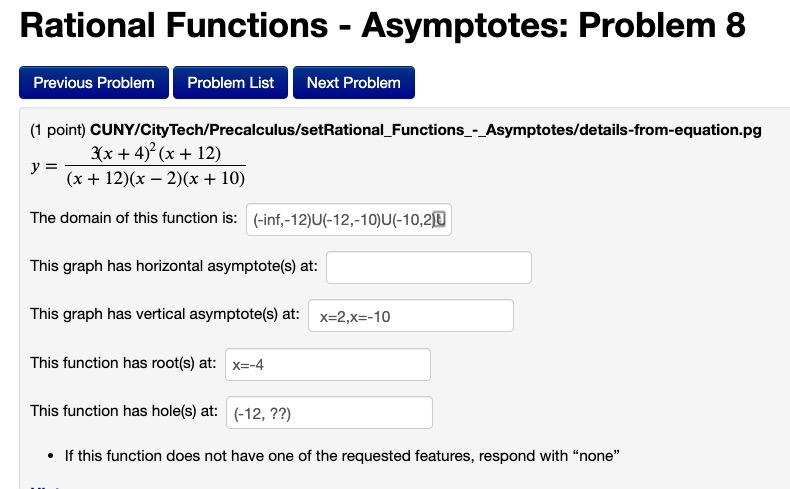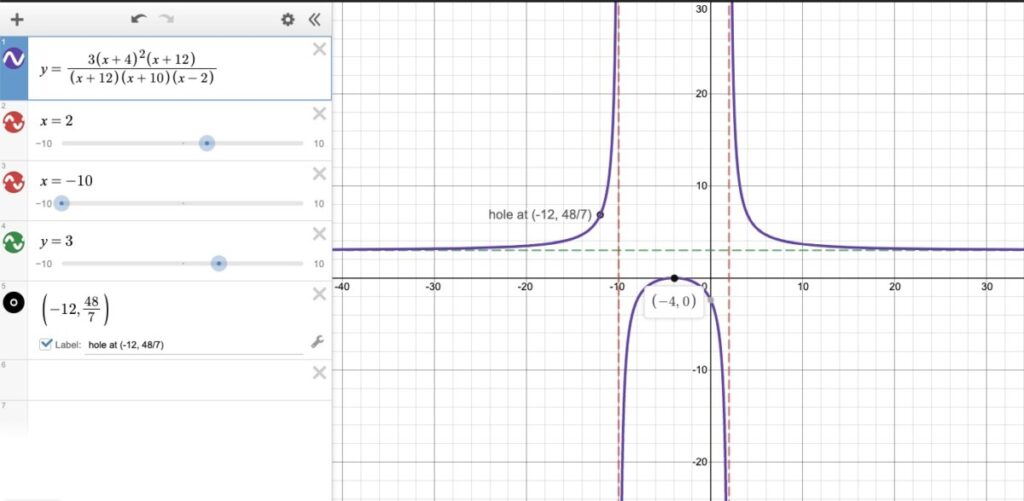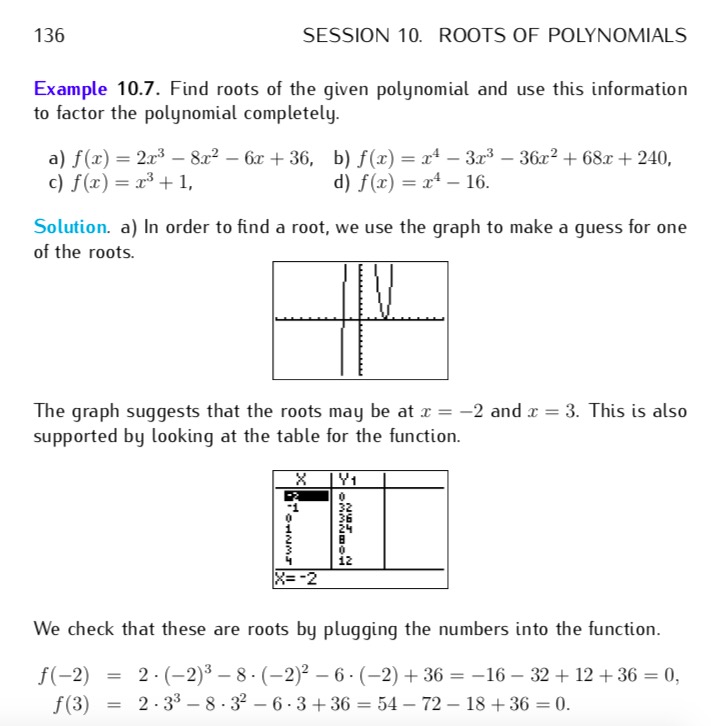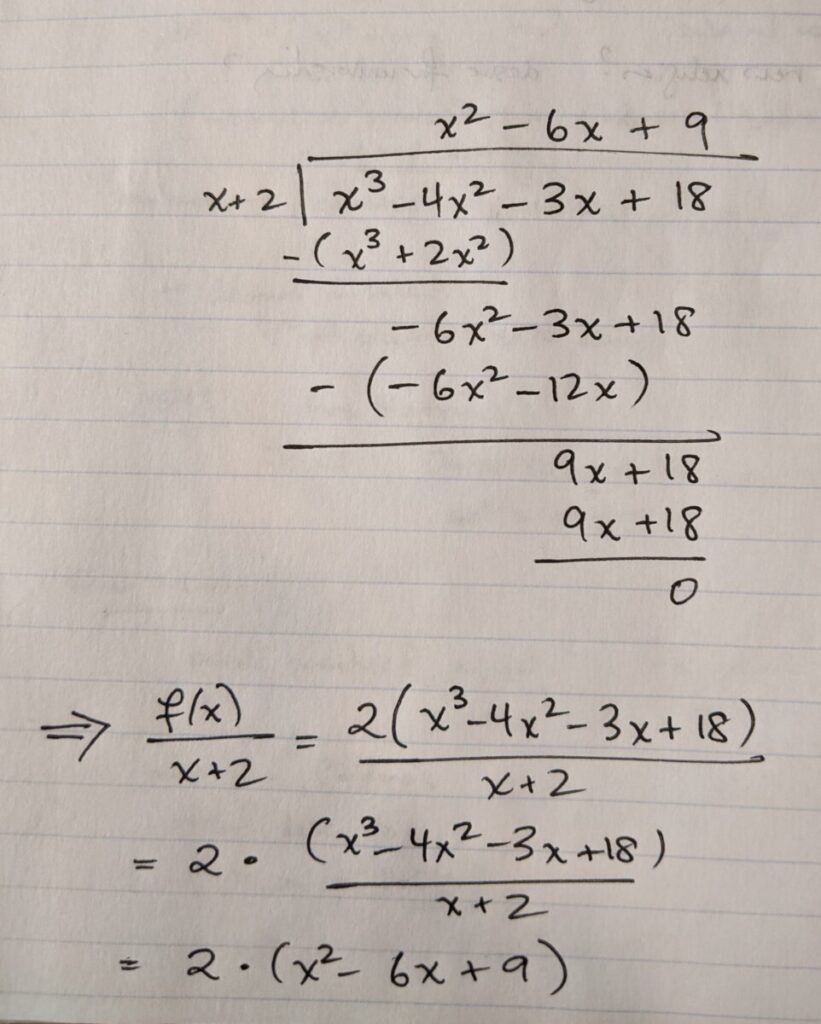A few people in class joined office hours earlier today and we discussed the following Rational Functions exercise (which I think we discussed in class also). I thought I would post some of what we discussed, as a summary of how to analyze rational functions.

Domain:
Recall that for the domain, we need to find the roots of the denominator, i.e., the x-values for which the denominator is 0. It’s clear (since we are given the polynomial in factored form) that the roots of the denominator are:
x = -12, x = 2, x = -10
This gives us the domain: all real numbers except for the roots of the denominator (since the rational function is undefined at those values!). This is (partially) shown in interval notation in the screenshot!
Vertical asymptotes:
Let’s look at the vertical asymptotes next, since that is related to the roots of the denominator used to find the domain: the roots of the denominator are possibly vertical asymptotes. In this example, the two vertical asymptotes are
x = 2, x = -10
Why isn’t the third value x = -12 a vertical asymptote? Note that the corresponding factor (x + 12) appears in the numerator as well as the denominator, and so we can simplify the function by cancelling that common factor. That means that x = -12 is not a vertical asymptote, and instead is actually the location of a hole.
(Why? Because we can see from the simplified form that
f(x) ≈ 3(x+4)2 / [(x-2)(x+10)] for x ≈ -12
(where “≈” stands for “approximately equal to”)
meaning that the values of f(x) don’t “blow up” to ±∞ for input values close to x= -12.
Holes
So we have concluded the function has a single hole at x = -12. As you can see from the screenshot, we entered (-12, ??) into WebWork–this exercise requires that we find the y-coordinate of the hole.
How do we do that? We use the observation above, that
f(x) ≈ 3(x+4)2 / [(x-2)(x+10)] for x ≈ -12
We can restate this as:
f(-12) ≈ 3(-12+4)2 / [(-12-2)(-12+10)] = 3(64)/[(-14)(-2)] = 48/7
This gives us the y-coordinate of the hole, i.e. the hole is at
(-12, 48/7)
Horizontal asymptote
Recall that for a rational function where the numerator and denominator are polynomials of the same degree, we look at the ratio of the leading terms to identify the horizontal asymptote.
That is the case in this example, since both the numerator and denominator are cubic polynomials. In particular:
f(x) = (3x3 + ….) / (x3 + ….)
(You should understand why this is! Think about where the leading terms come from, if you were to start multiplying out the factored forms of the numerator and denominator.)
Hence, the ration of the leading terms is
y = 3x3/ x3 = 3
This is the equation of the horizontal asymptote!
Putting it all together in Desmos
As I have been emphasizing, it’s a good idea to use Desmos as you do these exercises. In this case, I created a graph of the original function, and added in the vertical and horizontal asymptotes, as well as the location of the hole and the single root (x-intercept):

You can view this Desmos graph via https://www.desmos.com/calculator/b5ktqa5rai


 has a factor
has a factor 
 (i.e.
(i.e.  is a root).”
is a root).”




Recent Comments